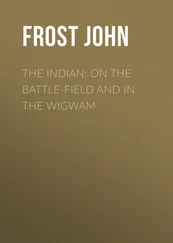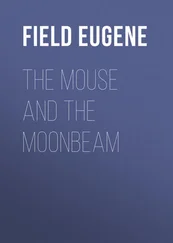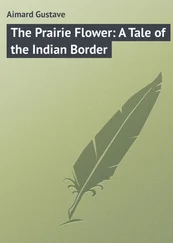Eugene Ware - The Indian War of 1864
Здесь есть возможность читать онлайн «Eugene Ware - The Indian War of 1864» весь текст электронной книги совершенно бесплатно (целиком полную версию без сокращений). В некоторых случаях можно слушать аудио, скачать через торрент в формате fb2 и присутствует краткое содержание. Жанр: Историческая проза, на английском языке. Описание произведения, (предисловие) а так же отзывы посетителей доступны на портале библиотеки ЛибКат.
- Название:The Indian War of 1864
- Автор:
- Жанр:
- Год:неизвестен
- ISBN:нет данных
- Рейтинг книги:3 / 5. Голосов: 1
-
Избранное:Добавить в избранное
- Отзывы:
-
Ваша оценка:
- 60
- 1
- 2
- 3
- 4
- 5
The Indian War of 1864: краткое содержание, описание и аннотация
Предлагаем к чтению аннотацию, описание, краткое содержание или предисловие (зависит от того, что написал сам автор книги «The Indian War of 1864»). Если вы не нашли необходимую информацию о книге — напишите в комментариях, мы постараемся отыскать её.
The Indian War of 1864 — читать онлайн бесплатно полную книгу (весь текст) целиком
Ниже представлен текст книги, разбитый по страницам. Система сохранения места последней прочитанной страницы, позволяет с удобством читать онлайн бесплатно книгу «The Indian War of 1864», без необходимости каждый раз заново искать на чём Вы остановились. Поставьте закладку, и сможете в любой момент перейти на страницу, на которой закончили чтение.
Интервал:
Закладка:
We found the old trail crossing two hundred fifty yards above where a ledge of rock jutted out over the stream, but it was too difficult to fix up and make passable, so we did not cross here. It was evidently an old buffalo trail, much traveled by the Indians, and all right for ponies, but it could not be utilized by our wagon train, so we went down the stream three miles farther. At this old trail-crossing was a clump of timber where an Indian camp had been, but which had been deserted a short time before. The guides said the camp could not be over a month old, and might be newer.
On this day's march, January 17, 1865, we saw observing Indians far in the distance, but we only got glimpses of them, and they disappeared so that we could not tell which way they were going. But as we went scouting through the country, several of us who had field-glasses and good horses, rode up on all the highlands in the neighborhood to scan the horizon with our glasses. This camp on Red Willow had been a large Indian camp, and the indications were that they had gone down the stream. The three miles which we went down the stream from the old trail-crossing were along deep buffalo trails, cut wide, and we followed these trails until they struck the stream. We utilized this buffalo trail across the stream, and in a short time with picks and shovels made an excellent crossing. In fact, if it had not been for these buffalo trails we would have had a great deal of trouble; the banks of the stream were very precipitous, and it would have delayed us much to have had to make wagon-roads across. But where the buffalo trails had worn down the banks, we made a good crossing without very much difficulty. Four miles down the stream from this crossing, on the other side, we camped.
From our camp down on the Red Willow as far as we could see, the cottonwood timber along the stream was very dense. The stream was sunk about four hundred feet below the level of the plateau, and along the stream were signs of great Indian camps. We had evidently got right into the country where the Indians lived, and where they had their permanent villages. We could see where they had been cutting down the limbs of the cottonwood trees for their ponies to browse on, and the grass was pretty well eaten off around in the neighborhood. There were many large cottonwood trees lying on the ground. The weather was very cold, and we chopped up these logs, and snaked them around with mule teams so as to get them in position, and we cooked supper and sat around discussing Indians until we crept into our tents at night. We had marched that day about 22 miles.
We emerged on the morning of the 18th from the canyon at the mouth of which we had camped, and went on southwest, leaving the river. There was an endless succession of sandhills. These hills had just enough clay in their composition to keep them from blowing entirely away; and they supported a slim lot of grass and weeds. On our left was a chain of ragged sand-bluffs. The road was rough on account of the many branches and ravines that struck it perpendicularly every quarter- or half-mile, many of them almost impassable. Our route was a succession of digging. We had to keep back as far as possible towards the sandhills, and we had to make a crossing at every ravine.
During this day's march three wagons broke down, showing the rough treatment which they had received in going across these ravines. An army wagon for Indian service had to be made out of the very best kind of stuff. It had to be made from old, well-seasoned timber, which in turn had to be kiln-dried before it was put into the wagons, otherwise, out on the plains, during the dry and cold weather, woodwork would shrink. Once in a while a wagon had been made of timber not sufficiently seasoned. This would be discovered upon a march such as the one we were on, and then great trouble was occasioned by it, because the wheels had to be taken off, and thrown in the stream overnight so as to soak and swell up, and this occasioned work and delay. If the wheels were not kept tight, the wagon was bound to collapse under the hard usage which it had to sustain. As we were eating up rations and horse-feed rapidly, the three broken wagons were left as empties. The wheels and some of the woodwork, however, were distributed through the train to furnish repairs in case of trouble.
This day's progress was only ten miles in a straight direction, but our journey was fifteen miles; we made a good road as we went. We crossed Blackwood Creek and a bad ravine going in a very crooked southwesterly course. Camped on the south side, where water was standing in pools.
Dotted line indicates route to Blackwood Creek.
The recent presence of large bands of Indians was noticeable, but there were none to be seen except an occasional scout far distant. The day's march, with few exceptions, ran on high ground.
On the morning of January 19, 1865, the cavalry started out ahead of the train. We did not believe there were any Indians who would attack the train, and as a few of the men were badly mounted, their horses having shown signs of weariness, they were left back with the train and a piece of artillery. We made a dash across the plateau a little south of west, headed for the big timbers of the Republican River. A march of twelve miles, about ten miles in a straight line, brought us to the L'eau qui Peaue. That was a French phrase, and it was called briefly, "Lo-ca-po." The translation of it from the French name is borne on the modern maps as "Stinking Water," but the old name of Lo-ca-po should have been retained.
We struck this stream two or three miles above its junction with White Man's Fork, went down its east side, and crossed the "White Man" below the junction. At the time we struck the Lo-ca-po its volume of water was twenty-four feet wide by sixteen inches deep, with a velocity of three miles per hour. The main stream of White Man's Fork had a width of eighty feet, by two feet deep, with a velocity of three and a half miles an hour. The Indian name for White Man's Fork was Wah-Seecha Wocca-pella. A short distance below where we crossed, a stream came up from the south called Ten-Mile Creek, which was small and impassable. Along the "White Man" at this point there were high bluffs on the south side, and a short distance down the river below our crossing the rock jutted out of a bluff and the river ran up under it at its base. The name of the stream is from the Sioux language. In that language Wah-Seecha means "white man." "Seecha" means "bad," and "Wah" means medicine; therefore a white man was, in Indian parlance, "bad medicine."
We then came in a southerly direction up on top of the plateau from the bed of the stream, and after about five miles of travel came to the head canyon of Ten-Mile Creek bent around to the west. This we crossed, and kept on to the Republican, our course from White Man's Fork being west of south. I give all these names as they were then used by traders and guides. I do not know present names.
In going across the upland upon this march, the advance guard, with which I happened to be marching, right at the highest point came onto a skull. It was the skull of an Indian and was very much decayed. Skulls upon that high, dry, hilly country lasted for a great many years. This one looked very ancient. It might have been a hundred years old. The skull had an iron arrow-point penetrating it from the upper side, the parietal region, entering the skull about an inch and a half. The arrow on the outside was almost rusted away. No other bones were visible. It was probably the relic of an ancient combat. We struck the Republican five miles below the upper end of the "Big Timbers," near a stream, and camped one-half mile below. The distance from White Man's Fork to the Republican would be about twenty miles direct, but by our line of march it was twenty-five.
Читать дальшеИнтервал:
Закладка:
Похожие книги на «The Indian War of 1864»
Представляем Вашему вниманию похожие книги на «The Indian War of 1864» списком для выбора. Мы отобрали схожую по названию и смыслу литературу в надежде предоставить читателям больше вариантов отыскать новые, интересные, ещё непрочитанные произведения.
Обсуждение, отзывы о книге «The Indian War of 1864» и просто собственные мнения читателей. Оставьте ваши комментарии, напишите, что Вы думаете о произведении, его смысле или главных героях. Укажите что конкретно понравилось, а что нет, и почему Вы так считаете.












